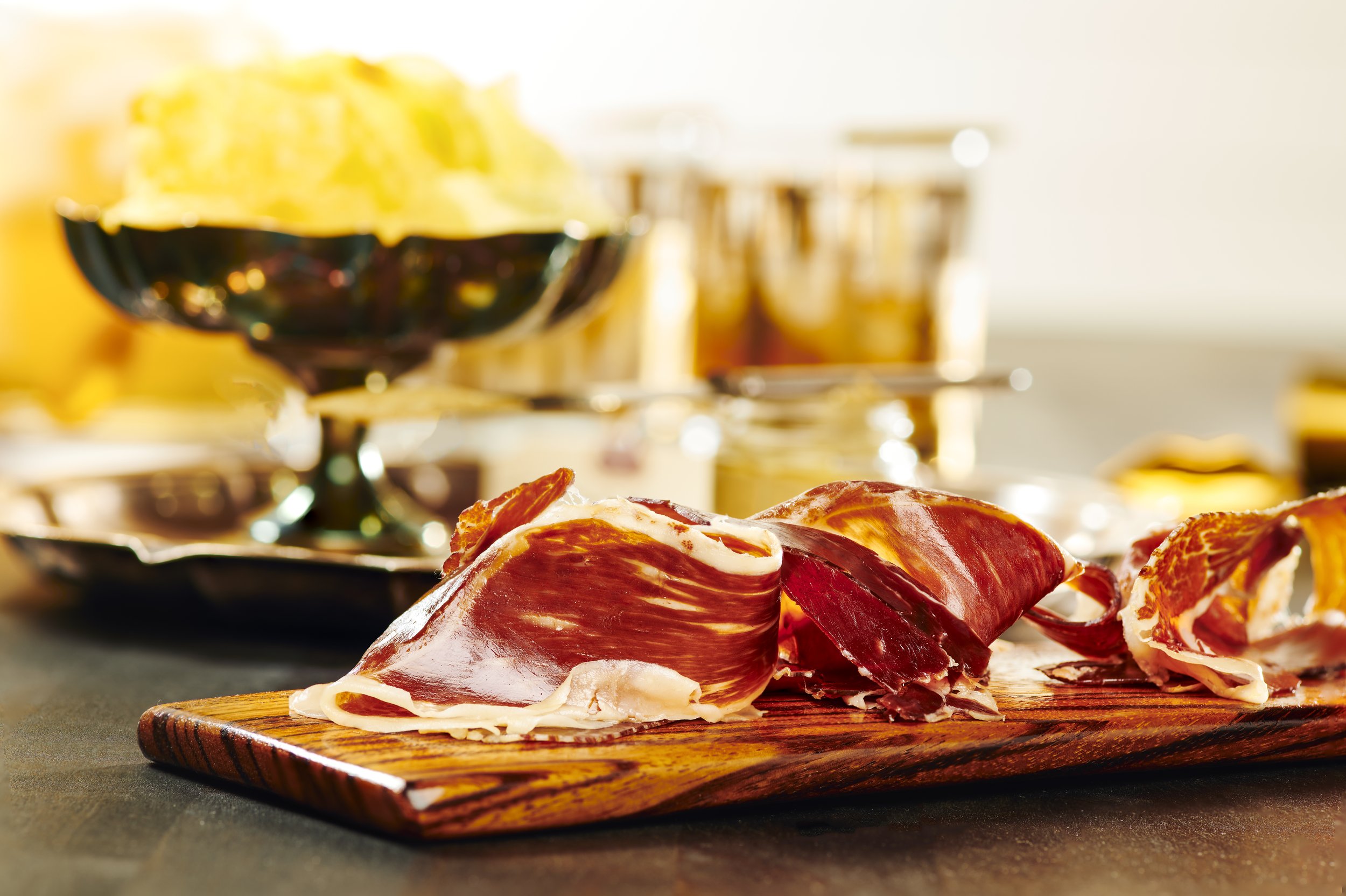Ham Traditions: Spain, France, & The United States
Throughout human history the need to preserve has driven advances in food preparation. Some of our most beloved preparations have been developed as means to make the harvest of now last until the table of tomorrow. Foods like pickles, sauerkraut, raisins, and bacon exist as a means to turn fresh produce and meat into something that will last longer than normal. Ham is one of the paragons of deliciousness as a result of the preservation process. Many culinary traditions have their own versions of ham. Some of our favorite come from France, Spain and the Southern United States. All are recognizable as cousins but each have their own nuances which set them apart.
Spain
Jamon Serrano & Jamon Iberico
Some of the most sought-after ham in the world comes from Spain.
Jamon Serrano comes from all over Spain. It must be produced according to very specific guidelines, such as fat content and aging time. Like any cured ham it must be covered in salt for several weeks, then hung to age, in this case for a year.
Jamon Iberico is even more closely regulated. This ham is considered by some to be the finest in the world. It can only come from Iberico pigs. This heritage breed can only be raised for Jamon Iberico on a unique grassland environment known as the Dehesa. The free-ranging and foraging lifestyle of these pigs create an incredible flavor in the ham they produce. Jamon Iberico is also aged for at least twice as long as most other cured hams, which even further develops the flavor of an already incredibly delicious product. Jamon is almost always eaten raw but can be found as an addition to Spanish croquettas.
France
Jambon de Bayonne & Jambon de Paris
Jambon de Bayonne is France’s most popular cured ham. It must be produced in Basque Country or Gascony. It is produced by curing in salt and hanging, like Jamon. Unique to Jambon de Bayonne is a partial covering of the ham by a mixture of flour and lard. This slows the moisture loss in the ham and makes for a more luscious and complex final product. Sometimes Espellette pepper is also added to the ham. Jambon de Bayonne is, like all cured hams, best enjoyed raw.
Jambon de Paris is not a dry-cured ham, but deserves a mention. It is wet-brined and poached in water with a bundle of aromatic herbs called bouquet-garni. This is the ham of choice for two of France’s greatest sandwiches: the Jambon Beurre and the Croque Monsieur.
The United States
Country Ham
American country ham has yet to earn the global prestige that has been awarded to Spanish or French hams, yet it deserves a place on any table. American country ham is not the stuff of the cold-cut counter at the local deli. Hailing from the Southeastern US, American country ham is produced in a similar fashion as the other great cured hams. The only outstanding difference is the frequent addition of brown sugar to the salt cure and a smoking step before maturing for 9-12 months. American country ham is fantastic raw, but is often a base for stews and gravies.


